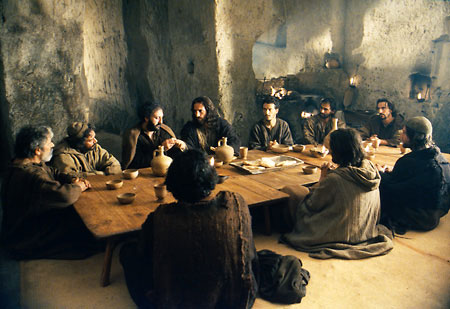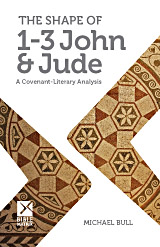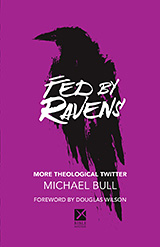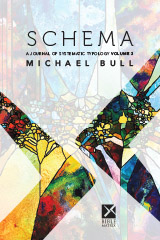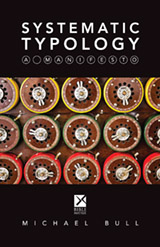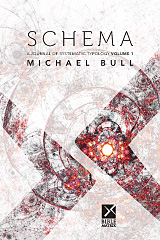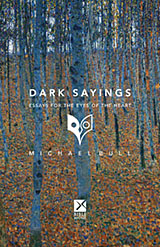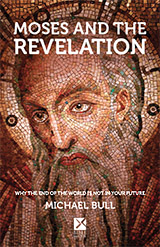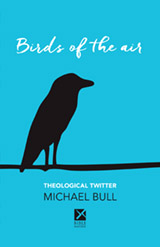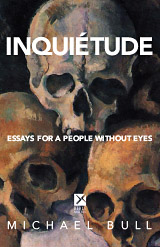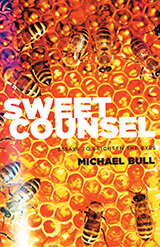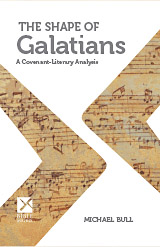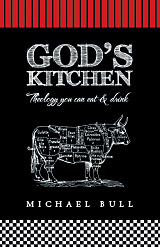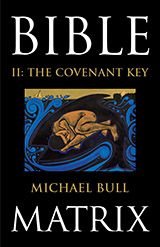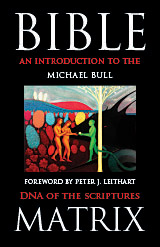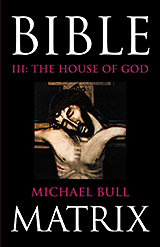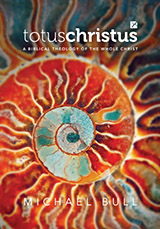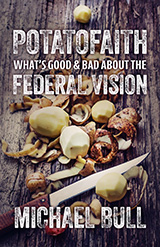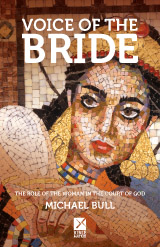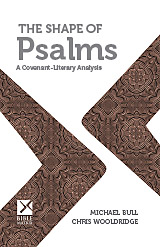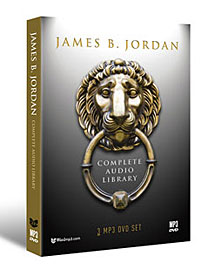Offering Your Members
“The Lord’s Table is for dangerous people.”
If you are going to baptize infants, it makes sense that you would also allow them to take Communion. Baptism brings one into the priesthood (through the Laver) to the court of God, and Communion is fellowship in the priestly kingdom. To unite the two is consistent—as consistent as the two pillars flanking the threshold of Solomon’s Temple.
The inclusion of children in Israel’s religious meals is used to support the practice. Some of those against it have asserted that these meals, even perhaps the Passover, did not include the children. James Jordan has a fascinating chapter entitled “Children and the Religious Meals of the Old Creation” in The Case for Covenant Communion. Where many Reformed writers (including some other authors in this book) get tied up in knots by the Reformers and their own traditions, Jordan’s perspective is always fresh because he looks first to the Bible, not for proof texts but for principles.
Jordan makes a clear case for the inclusion of children in the religious meals of the “old creation.” He lists a number of age specifications for various Israelite offices, and notes that there is no age specified for participation in the Passover meal. He concludes that if God had wanted to, he certainly could have specified a minimum age for participation.
So, children were included in Israel’s religious meals, most notably in the Passover. Since Israel was the Covenant people, then the children in the Christian Church should participate in Communion. Or should they?
The Circumcision of Israel
This sounds logical, of course, but it is the same logic by which one would expect a bruised, bloodied Jesus to wake up in the tomb, crawl out and stagger around with His burial clothes hanging off Him. Paedocommunion doesn’t speak of resurrection so much as resuscitation. And despite the truth concerning the meals of the Old Creation, dragging them into the New Creation, as I have said before, is akin to heaving the bloody Bronze Altar with its flesh and ashes inside the tent. Paedobaptism and paedocommunion are a call for God to accept the flesh.
Appealing to the Old Testament to interpret New Testament events is extremely helpful, but what if the New Testament event is itself a deliberate reinterpretation? Jesus did this all the time, and one of the most important is what He did at His last Passover, or more correctly, what He did to the last Passover.
What was Passover about? Circumcision and Passover were about redeeming Israel’s males from the barrenness of the womb, and the barrenness of the Land, curses upon the Covenant Head which can be traced back to Genesis 3.
What did Jesus do to Passover? He ended it. He ate the Passover with His disciples, and then the meal which spoke of cutting off history (leaven speaks of historical continuity), was itself cut off. There would be no more Passovers because it was only a shadow, and the day was about to dawn. In Jesus, all Israel had been redeemed and grown up. It was time for something new.
During the Passover, Jesus instituted a new meal. A symbolic meal, a “taste,” of risen bread and shared wine was taken out of the old meal. A new Israel was being established out of the corpse of the old one, not spiritually, not socially, not physically, but all three together. The combination of the priestly and kingly pillars in Solomon’s Temple invite the third pillar, the prophetic Shekinah, to indwell. The table of God is a place reserved for prophets.
Now, I could argue that since there were no children present, children cannot participate in Communion. But there were no women present either, and we know that women have always been allowed to take Communion. So there must be something deeper going on here.
Feed My Lambs?
“Jesus’ commission to Peter after His resurrection was not to dole out bread and wine to infants. It was to fatten those who had taken up their crosses, to prepare them for the slaughter to come…”
Tim Gallant, who also contributed to the book mentioned above, authored another book entitled Feed My Lambs: Why the Lord’s Table Should Be Restored to Covenant Children. While I appreciate the pastoral heart behind the desires of these faithful men to see children raised in the knowledge of God, it seems to me they have missed the point of the Last Supper.
Firstly, the title of Tim’s book refers to Jesus’ threefold command to Peter after Peter’s threefold betrayal (John 21:15-17). But what was Jesus actually saying when He gave that commission to Peter? He was, as usual, taking Old Testament architecture and fulfilling it in the flesh as a human Tabernacle. From God’s Kitchen:
In Peter, Jesus takes the people of Israel from outside the tent of Moses to sit inside as priests and elders.
Peter warmed himself at a fire outside the house of the High Priest. Architecturally, he stood at the Bronze Altar. The Covenant Ethics are three tests, symbolized in the blood, the fire and the smoke—or flesh, eyes and life. When tested, Peter refused to identify himself with the Lamb.
Luke records that Jesus “looked” at Peter. Whenever Jesus “looks intently” in the Gospels, He is the Lampstand, the Law, the eyes of God, the watchman lifted up over Israel as sun, moon and stars. The lunar feasts were fast fading as the sun of righteousness arose. And the rooster heralded the dawn.
John records the dawning of a better day. This time the fire is not on the Land but by the Sea. The focus has shifted from the center of Israel to her borders with the wild nations. The resurrected Jesus invites Peter not to offer himself to death but to dine with One who has conquered death on his behalf. Architecturally, Peter has passed through the Laver—from death to life—to join Christ as an elder at the Altar of Incense.
Again, Peter is tested three times. Instead of Altar; Fire; Altar, it is Feed; Tend; Feed. In this way, Jesus deals compassionately with past failure and calls Peter to a better future (as He does with us every week at the Lord’s Table). But in Peter’s recommission, and in ours, there is a call to sacrificial life. There is a transfixing redness to the New Covenant dawn.
The “official” death-and-resurrection of Peter would be repeated in the Firstfruits Church. When Jesus told Peter to feed His sheep, they both knew those sheep, like Peter, were being fattened for the altar.
Animal sacrifices were no longer acceptable now that Jesus had died and risen again.
But in Jesus, human ones were.
For whoever would save his life will lose it,
but whoever loses his life for my sake
and the gospel’s will save it.
(Mark 8:35)
The reason there were only men at the Last Supper is because a new lamb was being selected for sacrifice: not only a head, but also a body. Following the Ascension Offering in Leviticus 1, the head would be offered first, and then the body would be washed and offered. Sharing in this feast with Jesus made these men members of the sacrificial lamb, that is, parts of its body. Jesus was the first human sacrifice which was acceptable to God. Because the Father accepted Him, as firstfruits, the full harvest, the body, was made acceptable also.
What I am saying here is that the disciples, through transformation into apostles, were human sacrifices. Just as Jesus’ death dealt with the serpent (the counterfeit head), their deaths dealt with the brood of vipers, the fiery serpents ruling Jerusalem (the counterfeit body). This is why there were not women and children present. Corporately speaking, the disciples were the “bones” of the Passover lamb which were not to be broken. They would form the structure of a new house, a new Tabernacle which was made entirely out of lambs. This was about the end of circumcision, which was not about children but about males.
After the resurrection, women are in the picture again, and in a big way. They are the first “witnesses” because the role of the Woman is the sacrifice of praise. After the serpent is felled, she sings and calls down the Covenant curses upon it. But once again, where are the children? Are they absent? No. But it is clear that the New Covenant is not about Jew and Gentile but about a new priesthood for all people. It is not about the cutting of flesh but about witness, about testimony, about telling what you have seen now that you have tasted death under the Law and your eyes have been opened. Having tasted death, as Jesus did for all men, innoculates one against death. It loses its sting. Baptism is for those who confess with their mouths that they are willing to lose their lives for Jesus’ sake and the Gospel’s. Baptism is an act of courage.
So Jesus’ commission to Peter after His resurrection was not to dole out bread and wine to infants. It was to fatten those who had taken up their crosses, to prepare them for the slaughter to come, through which they would bring down Jerusalem and then Rome—”every high thing which exalts itself against the knowledge of God.”
In the Law, a lamb does not speak of a young child but of a blameless son, like Jesus at His baptism. He was vindicated before His earthly father at age twelve and vindicated before His heavenly Father at age 30, ready for holy war. Baptism is not for babies or infants but for holy warriors, and there were no baby Nazirites (but there were women!). To make it so is to miss the point of union with Christ altogether, and make the New Covenant into something social, something carnal, a community according to the flesh. Paedobaptism is poison to the heart of the New Covenant.
To open baptism and Communion to infants is to take the Church back to the Old Covenant, the time of dark sayings and shadows. It is to say that Christ has not come in the flesh, and Christ is not risen from the dead, and this was exactly the motive behind the Herods’ years of glorious Passovers leading up to the destruction of their serpentine rulers, their women, and their children—the entire congregation was “circumcised.”
So, what about our children? We are holy members of the Lamb, bone of His bone, and flesh of His flesh, but also Spirit of His Spirit. The Lord’s table is not for “feeding” infants the Gospel. Look at the picture above. It is a group of subversives planning to change the world by laying down their lives. The Lord’s Table is for dangerous people, and partaking in the Table is itself a public testimony. It is for living sacrifices, and our physical children, as with all those who hear and have not yet repented, feed upon us. We are the cut up, washed “members” of the lamb on the Altar. We mediate Jesus to them. Only the Gospel transforms the sons of men into the sons of God, and all the sons of God are sacrificial lambs who have willingly taken up the cross. The New Covenant body is a human sacrifice.
Now you are the body of Christ and individually members of it. (1 Corinthians 12:27)
